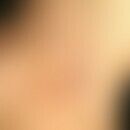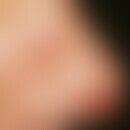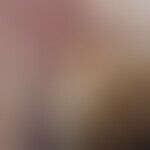Synonym(s)
Plaster-of-Paris-like lacunae
DefinitionThis section has been translated automatically.
The term "lacuna" describes a columnar or trough-like depression or cavernous cavity within a skin lesion viewed dermatoscopically.
General informationThis section has been translated automatically.
Reflected light microscopy: Lacunar formations in the reflected light plane appear as round, oval, oblong or polycyclic, as if punched out and filled with grey-white gypsum mass.
You might also be interested in
OccurrenceThis section has been translated automatically.
In about 30% of malignant melanomas above Clark Level III (pT2), so-called alabaster gypsum-like lacunae are found. The specificity is stated to be over 95%. In the group of benign pigment cell tumours identical changes occur rarely and only in recurrent nevi.
HistologyThis section has been translated automatically.
Fibrous tumor replacement tissue in the lower papillary stratum at the border to the reticular stratum. Above the fibrosis zones, epidermally located, there are often still reticular fragments and/or tumor cell agglomerates.
LiteratureThis section has been translated automatically.
- Rhodes AR (1995) Comment on: "Malignant melanoma in epiluminescent microscopy". In: Sober AJ, Fitzpatrick TB (eds) Yearbook of Dermatlogy 1995, Mosby, St.Louis Baltimore Boston
- Schulz H (2002) Reflected light microscopic vital histology. Springer, Berlin Heidelberg New York





